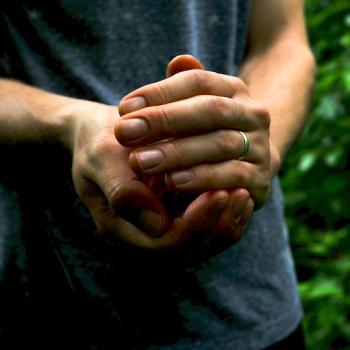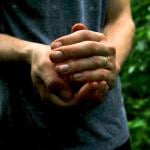Last week’s blog detailed the dismantling the False Core Pattern as the first step toward Unique Self emergence. We find Enneagram Theory compelling as it is a system of nine distinct personality styles (or enneatypes) that lead to nine different paradigms or perspectives on life. Each perspective is marked by a particular pattern of thinking and feeling, a “cognitive-emotional habit” that is based on the motives behind a person’s priorities and preferences. Because we believe that people come into form with a particular Enneatype, it stands to reason that the “cognitive-emotional habit” has a close relationship to the False Self Sentence/Belief (link to blog 3)we discussed in the False Self blog two weeks ago. In other words, our Enneatype influences the false conclusion/belief we draw when we endure the shock of leaving the unbounded for a body and secondly when individuation begins and realize we are separate, not one with everyone around us.
Enneagram Theory tells us that there are nine master archetypes or vehicles by which consciousness is channeled in the body. When we’re born we embody the energy of one master type. The type helps us function in physical life by focusing our attention and preventing sensory overload. In the next series of blogs we’ll discuss each of the nine Enneatypes with a particular look at the “cognitive-emotional habit” of each. This will give you some clues to your own False Core Belief with specific mini practices to help you begin to loosen the grip of your False Self Pattern.
Each Enneatype belongs to one of three Energy Centers. These centers give us the ability to receive and to express energy through one of the following: gut or physical/ the head or intellectual/the heart or feelings. The next three weeks we’ll look at The Body Center Triad, whichincludes types 8,9 and 1. The energy of these points is natural, unassertive, and unself-conscious. People whose home base is at one of these points have the potential to be particularly attuned to the wisdom of the body, to be aware of their “gut instincts” and to the natural rhythms of life.
Today, we’ll discuss Enneatype 8’s specific “cognitive-emotional habit.” Eights find safety in strength and a sense of invulnerability, so they unconsciously repress fear and other vulnerable emotions. As a result, they often adopt a strategy that allows them to deny the existence of painful emotions related to being small and vulnerable.
The False Self contraction in Eights is revealed through a tendency to view themselves as above all forms of authority and denying any limitations. They protect themselves through their power and strength as a way of avoiding to experience deeper feelings of powerlessness or weakness.
Here are the False Core Sentences/Beliefs followed by descriptions of patterns that are common to Eights.If one of these sentences, and/or pattern feel familiar to you, you might want to explore the practices that accompany the pattern. Each of these practices is geared towards creating more awareness of the ways into which you contract. Creating awareness is the first step towards dismantling your False Core Pattern. Practices are most effectively when used daily.
Common False Core Sentences:
I’m not enough.
I am too much.
I am weak.
I’m powerless.
Common Patterns:
Rebelling against outside authority and denying (internal and external) limitations.
Observation Practice: During the day, observe what happens when you don’t accept conventional limits and you become rebellious. Notice any thoughts and beliefs you have about yourself as superior to others that you habitually don’t question or doubt.
Daily journaling:
- How do you go against conventional authority?
- What beliefs do you hold that support your rebellion?
- What do you end up doing when you act from a sense of yourself as the ultimate authority?
Focusing on and acting from power and strength or out of anger, as overcompensation for denied powerlessness and weakness.
Observation Practice: Notice when you feel angry and when you feel an impulse to act on it.
Daily journaling:
- What kinds of things make you angry and why?
- What kinds of things do you do to assert yourself and express your power in the world?
Confronting things and pushing forward as a way of trying to obtain your way at any price.
Observation Practice: During the day, notice when your thinking supports the correctness of your view of things without considering potential ways you might be incorrect or potential vulnerabilities in your perspective.
Daily journaling:
- What do you find difficult in considering how you may be incorrect?
- What do you find difficult in moderating your expressions of aggression?
Avoiding and denying vulnerable feelings and dependence on others.
Observation Practice: During the day, observe how difficult it is for you to recognize and own your more vulnerable emotions. Notice if you judge yourself as being weak if you allow yourself to have a wider range of feelings, and observe the effects of that kind of self-judgment.
Daily journaling:
- What thoughts do you have about your softer feelings?
- What kinds of things do you do to keep from being aware of them?
Next week, we’ll explore Enneatype Nine, the second Point of the Body Center. In the meantime, and if you do not personally resonate with Type Eight, we invite you to ask yourself who in your close surroundings might be a Type Eight, and how does this description of their way of functioning in the world, might help you understand them better? And if you think it’s appropriate, you might want to share this post with them.
If you are uncertain about your type and would like to take a free inventory we recommend either the Enneagram Institute or Enneagram Dimensions.
For more information on False Self Patterns join our on line coaching group beginning February 28: Loosening the Grip of the False Self














